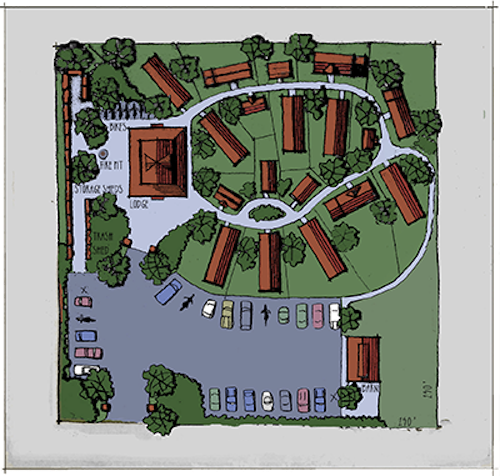As homeownership becomes a distant dream for many, the tiny home movement has emerged as more than a fleeting trend—it's become a beacon of hope and a promise of stability.
Here at Operation Tiny Home, we have seen firsthand how a tiny home can revolutionize the life of someone seeking stability, simplicity, and a joy-filled life shared with a community of like-minded people.
Over time, numerous individuals have sought our guidance on creating their own tiny home communities. In response, we've put together this guide to help assist on getting started!
Step 1: Embrace Your Vision
Every impactful journey begins with a vision. Yours might stem from a desire to offer affordable housing, create a sustainable living alternative, or build a supportive community for specific groups like veterans or retirees. Reflect on what you aim to achieve, and let that vision be your guide.
Step 2: Research and Plan with Purpose
Understanding the legal landscape is crucial. Investigate zoning laws and building codes in your desired area. Planning is where dreams start to take shape—consider layout, communal spaces, and how the community can positively impact its residents and the surrounding neighborhood.
Step 3: Secure Funding Through Storytelling
Funding your community is where your vision meets the real world. Grants, loans, crowdfunding, and partnerships are avenues to explore. Share your story with potential partners. The narrative of building hope and homes resonates deeply and can open hearts—and wallets. Consider the story of a veteran who found not just housing but a sense of purpose and camaraderie within a tiny home community. Or the single parent who, through the support of neighbors, found the strength to pursue new opportunities. These stories aren't just testimonials; they're the heartbeats of your community.
Step 4: Explore Sustainable Practices
Sustainability isn't just about the materials you use but also about creating a living space that harmonizes with its environment. Incorporating solar panels, rainwater collection systems, and community gardens are more than eco-friendly choices; they're educational opportunities and a way to reduce living costs. Every sustainable action reinforces the message that tiny living is about making a big impact with small footprints. Opting for sustainable and durable materials in your construction might be something to consider. Choosing sustainability can benefit the environment and contribute to positively shaping your community's culture. It's an option that aligns with eco-friendly living, helping the planet and the community ethos.
Step 5: Cultivate Community Engagement
A tiny home community thrives on the engagement of its members. Develop a transparent selection process for residents, emphasizing the community values and each member's role. Foster a sense of belonging through shared gardens, workshops, and communal gatherings.
Step 6: Launch and Grow Together
With planning and passion, launch your community. But remember, this is just the beginning. Collect feedback, be willing to adapt, and always keep the lines of communication open. Your community should evolve as its members grow and change.
Embarking on the creation of a tiny home community represents a bold step towards innovation, hope, and impactful leadership. It's a journey of transforming simplicity and sustainability into a living, breathing space where people connect, share, and thrive together—where homes are not just structures, but the embodiment of aspirations and resolve. It's about forging a future where belonging and inclusiveness are foundational.
At Operation Tiny Home, we stand ready to guide and support you as you bring this vision to life. Discover how our Pathways to Tiny Housing Program can empower you to make sustainable, affordable housing a reality for those who dream of a community they can call their own. Let's work together to create spaces that are not just about living small in size, but living large in value and purpose



